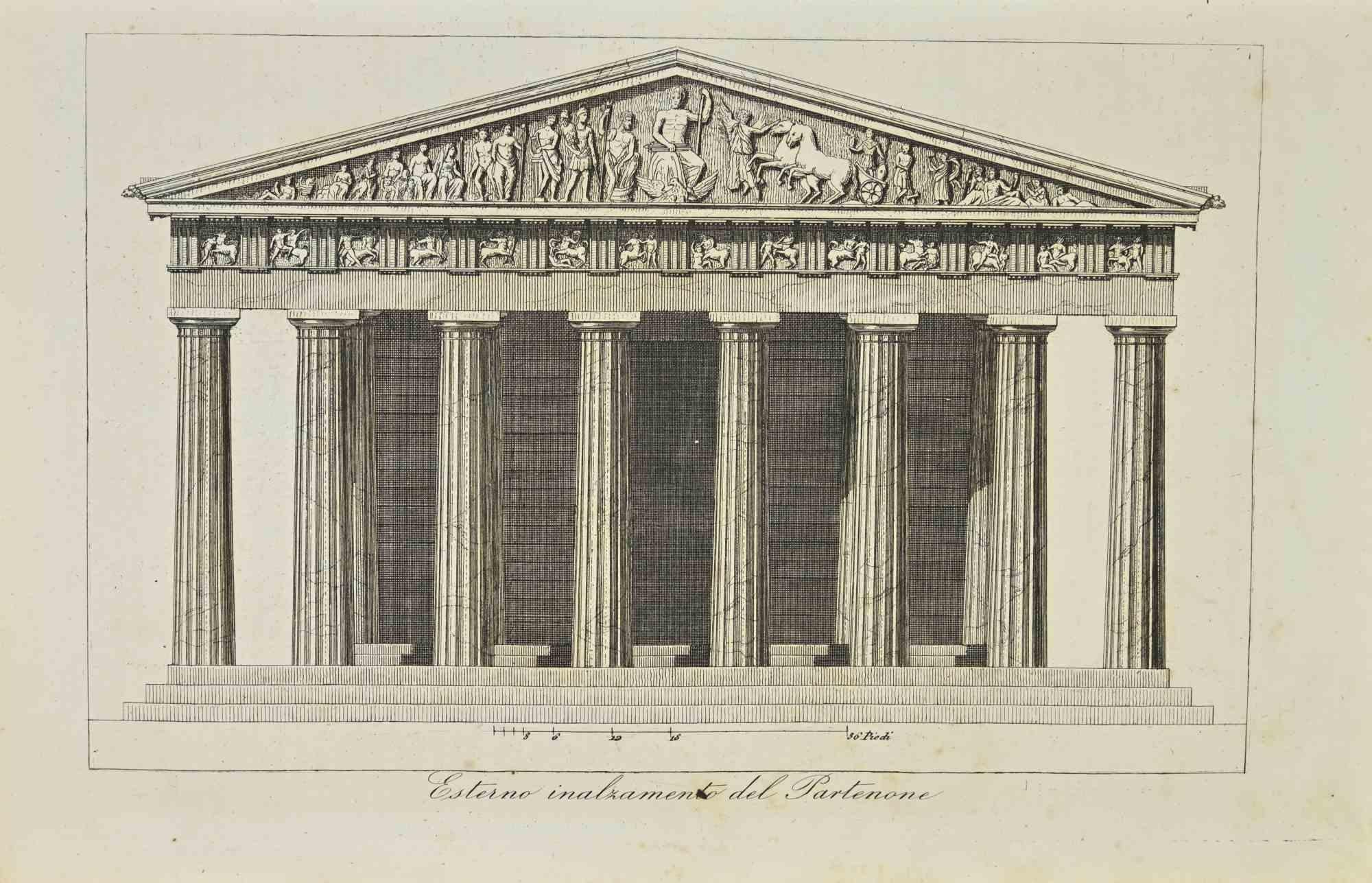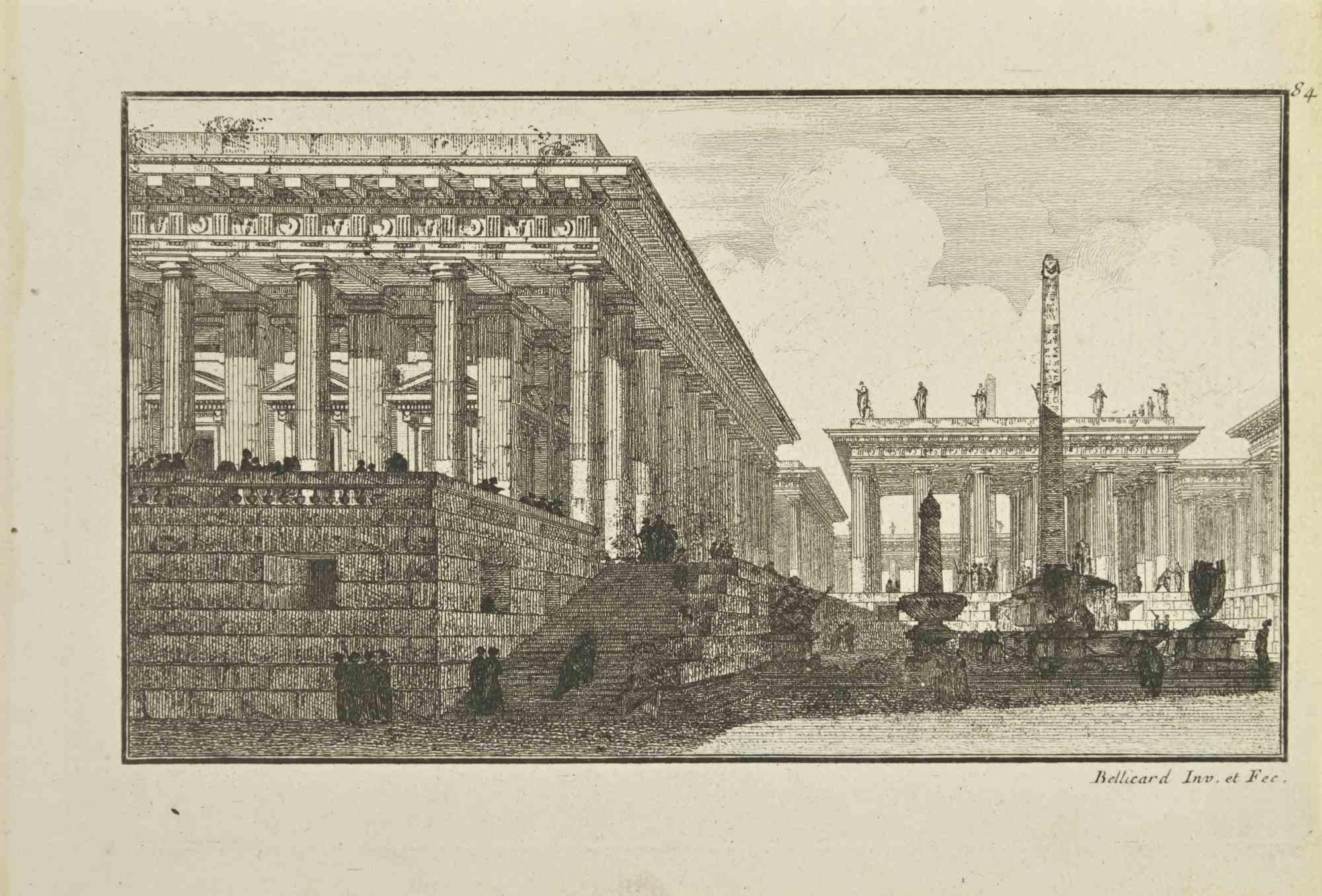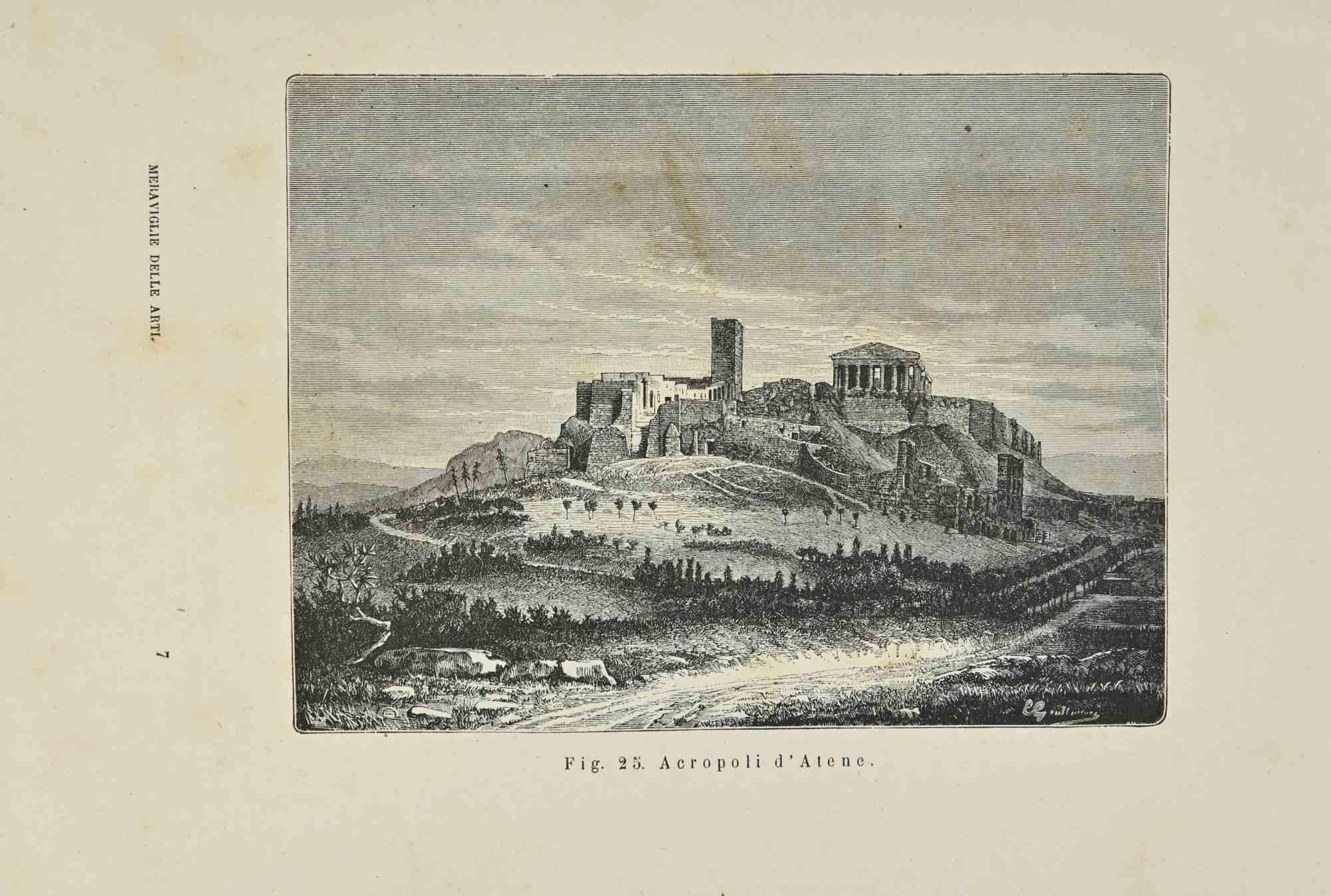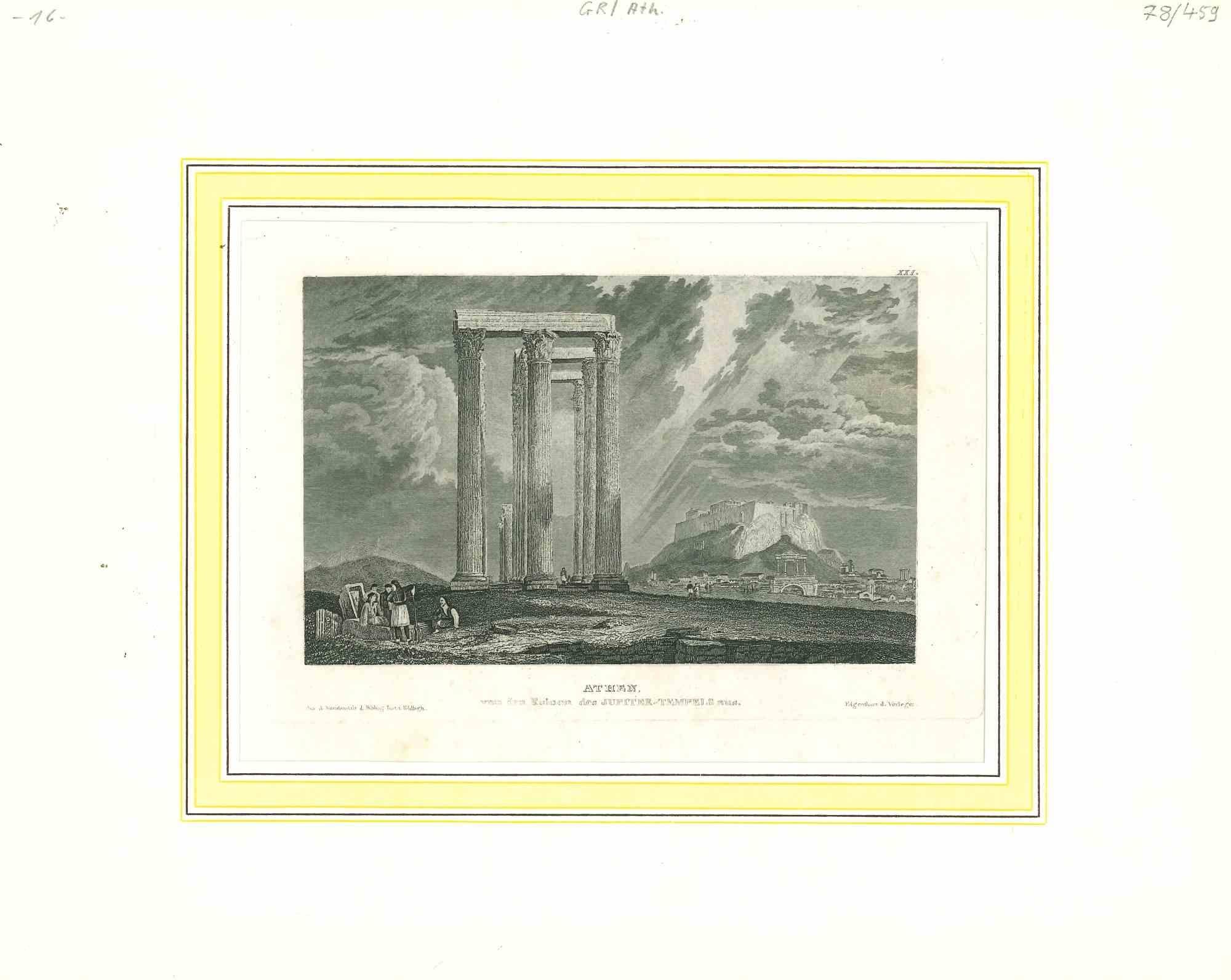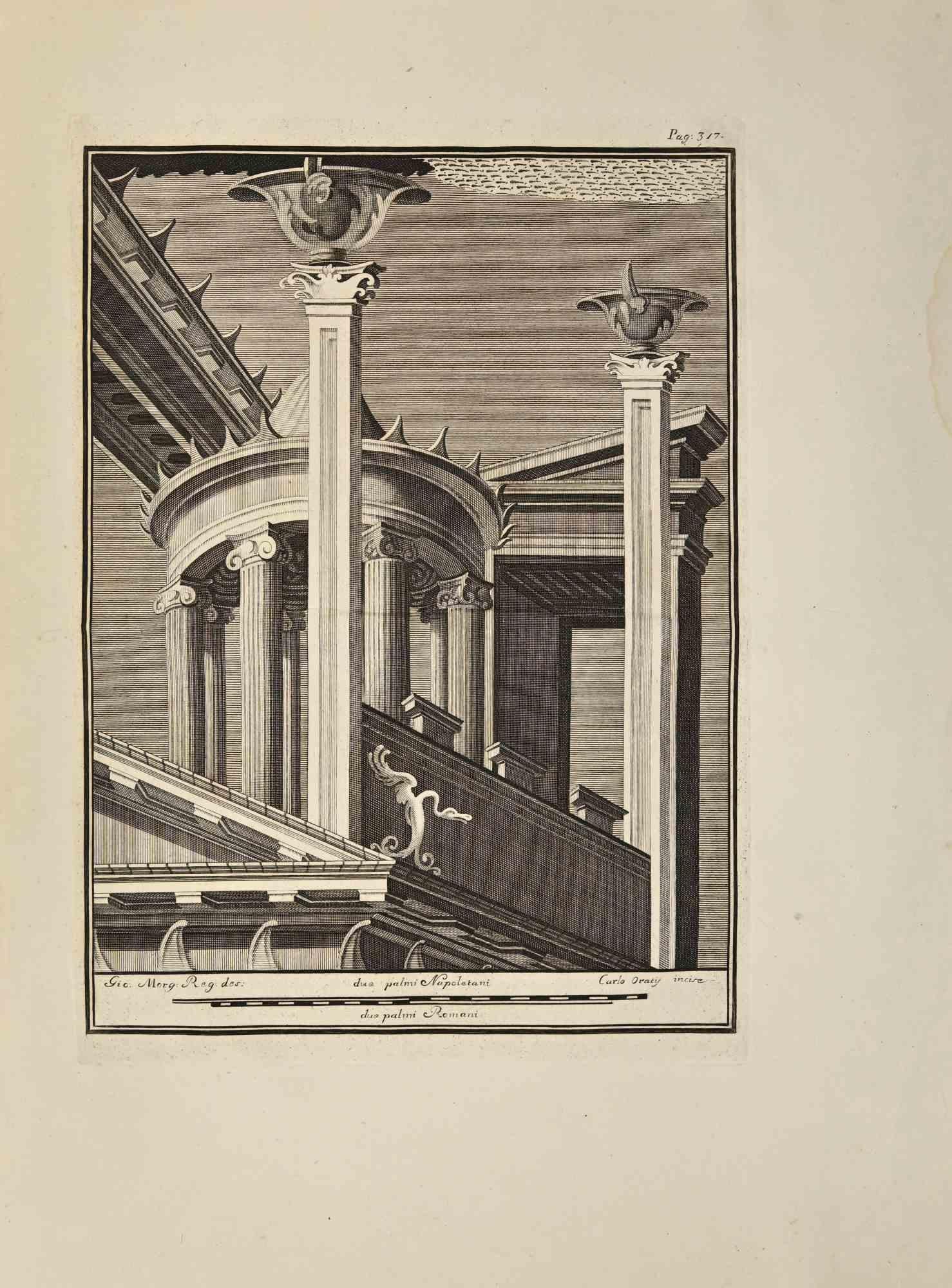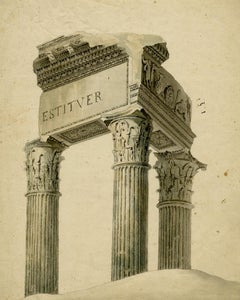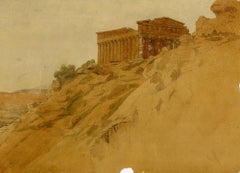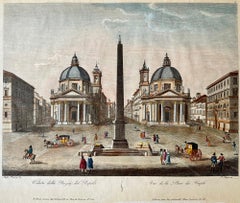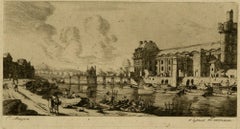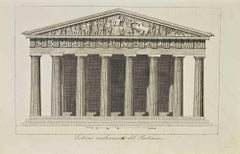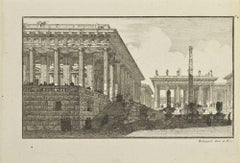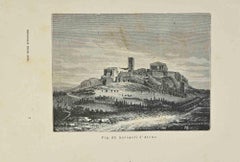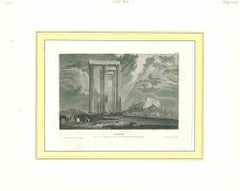Items Similar to Reconstruction of the citadel, or acropolis, of Athens
Want more images or videos?
Request additional images or videos from the seller
1 of 3
Paul Johann WeindlReconstruction of the citadel, or acropolis, of Athens1810
1810
$350
£269.60
€307.85
CA$499.28
A$546.12
CHF 286.59
MX$6,531.32
NOK 3,616.77
SEK 3,374.01
DKK 2,299.08
About the Item
Engraving with hand coloring on H & I Honig watermarked laid paper, 7 1/2 x 10 1/2 inches (191 x 262 mm); sheet 9 1/4 x 13 1/4 inches (235 x 332 mm), full margins. In good condition with vibrant coloration. Likely from the second edition of Les ruines des plux beaux monuments de la Grèce, by Julien Davis Le Roy, printed later.
- Creator:Paul Johann Weindl (1771 - 1811, Austrian)
- Creation Year:1810
- Dimensions:Height: 7.52 in (19.1 cm)Width: 10.32 in (26.2 cm)
- Medium:
- Movement & Style:
- Period:
- Condition:
- Gallery Location:Middletown, NY
- Reference Number:Seller: BH16101stDibs: LU1979216576882
About the Seller
5.0
Vetted Professional Seller
Every seller passes strict standards for authenticity and reliability
Established in 2004
1stDibs seller since 2022
77 sales on 1stDibs
Typical response time: 22 hours
- ShippingRetrieving quote...Shipping from: Middletown, NY
- Return Policy
More From This Seller
View AllA Grand Tour study of ruins in the Roman Forum - English School, early 19th C.
Located in Middletown, NY
Ink and wash in black ink with pen in black ink on watermarked C & I Honig cream laid paper, 14 7/8 x 12 1/4 inches (378 x 311 mm), the full sheet. In very good condition with some m...
Category
Early 19th Century French School Landscape Drawings and Watercolors
Materials
Handmade Paper, Ink
The Temple of Concordia, Agrigento - English School drawing, 19th Century
Located in Middletown, NY
A lovely grand tour image of the Doric architectural masterpiece dedicated to Castor and Pollux.
Dated 1863.
Watercolor and graphite on lightweight card stock, 10 x 13 3/4 inches (2...
Category
Mid-19th Century English School Landscape Drawings and Watercolors
Materials
Watercolor, Cardboard, Graphite
Veduta della Piazza del Popolo
Located in Middletown, NY
Ruga, Pietro (after Luigi Magozza). Veduta della Piazza del Popolo. Rome: Giacomo Antonelli, 1825. Engraving with hand coloring in watercolor on cream wove paper with a "PM" watermar...
Category
Early 19th Century Italian School Landscape Prints
Materials
Watercolor, Handmade Paper, Engraving
The Pavilion de Mademoiselle and Part of the Louvre
By Charles Meryon
Located in Middletown, NY
A fine and early state impression from an almost unparralled 19th century Parisian collection curated by Loys Delteil.
Etching, drypoint, and roulette on buff laid Japon paper, 5 7/16 x 9 13/16 inches (137 × 249 mm) full margins. In very good condition with light and unobtrusive scattered foxing. Some pencil inscriptions in the margins, recto, as well as the Alfred Beurdeley collection stamp (Lugt 421) in black ink in the lower left margin on the recto. There are some light scattered inscriptions in pencil on the verso, as well as a numerical stamp in blue ink, which we believe is the lot number from part III of a well-known series of sales of Beurdeley's collection organized by Loys Delteil. This portion of the sale of Beurdeley's massive collection focused on Modern Prints, and took place on May 19 – 20, 1920, in Paris. In regard to the content of the sale, Fritz Lugt states "Meryon's work included all the beautiful pieces about Paris." A rich and tonal impression.
[Delteil & Wright 9; Schneiderman 12].
A note on the provenance:
Alfred Beurdeley (1847-1919) was the son of one of the first antique dealers in Paris...
Category
Mid-19th Century French School Landscape Prints
Materials
Handmade Paper, Laid Paper, Etching
Forum of Minerva, Assisi, Italy
By William Walcot R. E. Hon. R. I. B. A.
Located in Middletown, NY
Etching with aquatint on watermarked F J Head & Co. cream laid paper, 9 3/4 x 11 1/2 inches (245 x 290 mm), full margins. Signed in pencil, lower margin. Scattered age tone and mat t...
Category
Early 20th Century Modern Landscape Prints
Materials
Laid Paper, Etching, Aquatint
Jeux de boules - Near the City Gate
By Herman van Swanevelt
Located in Middletown, NY
Etching on cream laid paper, 6 7/8 x 10 7/8 inches (175 x 275 mm), thin margins. Some minor surface soiling and paper tape residue in four areas along the top sheet edge, verso, othe...
Category
Mid-17th Century Old Masters Landscape Prints
Materials
Laid Paper, Etching
You May Also Like
Exterior of the Parthenon - Lithograph - 1862
Located in Roma, IT
Exterior of the Parthenon is a lithograph on paper realized in 1862.
The artwork belongs to the Suite Uses and customs of all the peoples of the universe: " History of the governmen...
Category
1860s Modern Figurative Prints
Materials
Lithograph
Roman Forum - Etching by Jérôme Charles Bellicard - 18th Century
Located in Roma, IT
Roman Forum is an etching realized by Jérôme Charles Bellicard in 18th Century.
Good conditions.
The artwork is depicted through confident strokes.
Category
18th Century Modern Figurative Prints
Materials
Etching
Acropolis of Athens - Lithograph - 1862
Located in Roma, IT
Uses and Customs - Acropolis of Athens is a lithograph on paper realized in 1862.
The artwork belongs to the Suite Uses and customs of all the peoples of the universe: " History of ...
Category
1860s Modern Figurative Prints
Materials
Lithograph
Ancient View of Athens - Original Lithograph - Mid-19th Century
Located in Roma, IT
Athens is an original modern artwork realized in the mid-19th Century.
Original B/W Lithograph on Ivory Paper.
Inscripted on the lower margin in Capital Letters: Athen von den Ru...
Category
Mid-20th Century Modern Landscape Prints
Materials
Lithograph
Ancient View of Athens - Lithograph - Midy-19th Century
Located in Roma, IT
Ancient View of Athens is an original modern artwork realized in the mid-19th Century.
Original B/W Lithograph on Ivory Paper.
Inscripted on the lower margin in Capital Letters: ...
Category
Mid-20th Century Figurative Prints
Materials
Paper, Lithograph
Roman Temple Fresco - Etching by Carlo Oraty - 18th Century
Located in Roma, IT
Roman Temple Fresco from "Antiquities of Herculaneum" is an etching on paper realized by Carlo Oraty in the 18th Century.
Signed on the plate.
Good conditions expect some folding a...
Category
Late 18th Century Old Masters Figurative Prints
Materials
Etching
More Ways To Browse
Harold Altman Child
Harold Hitchcock On Sale
Helen West Heller. American. On Sale
Highlands Ski
Hirst Honour
Ivan Rabuzin On Sale
Jacob Lawrence Play 1999
James Sanford Hulme
Jean Paul Loup
Jennifer Dickson
John Collette On Sale
Joseph Feher
Josset Eton College
Ken Keeley On Sale
Lena Liu
Lichtenstein Liberte
Louis Orr Duke Chapel Etching
Luigi Lucioni On Sale
